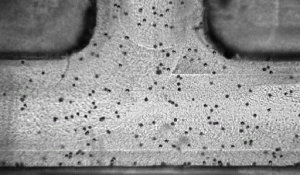9-13 June 2014, The 18th European Conference on Mathematics for Industry, Taormina (Italy).

I am presenting a talk about my results on “An experimental and theoretical investigation of particle–wall impacts in a T-junction”, the work I did in collaboration with Ian Griffiths, Stefan Radl and Howard Stone.
The presence of particles entrained in liquid flowing in confined geometries such as pipes and channels arises in a broad spectrum of areas including engineering and the natural and biological sciences. Understanding the particle behavior upon changes in flow direction is crucial in problems where particle inertia is important, such as the erosion process in pipe bends. The aim of our work is to understand and predict the mechanism of solid particle erosion (SPE) induced by dense particles flowing in the system, and the implication that a closed loop has on the intensity of this phenomenon. Our motivation started with the investigation of the water cooling loop of ITER, the prototype of a nuclear fusion reactor at the moment under construction in France. In this specific environment, in fact, the water is recirculated for several months prior to exchange, potentially increasing the concentration of debris contained within, hence the likelihood of SPE. An optimization of the working conditions and on the filtering sections are essential to improve the life of the piping system and, more important, the overall safety of the plant.
Here we present results on the impact of particles in a T-shaped channel in the laminar- turbulent transitional regime. The impacting event for a given system regime is described in terms of the particle Stokes number and the Reynolds number where, for the model local extensional flow, the latter also characterizes the ratio of particle size to thickness of the viscous boundary layer that forms in the region below the impingement. Experimental results for the impact are compared with the trajectories predicted by theoretical particle-tracing models for a range of configurations to determine the role of the viscous boundary layer in slowing down the particles and reducing the rate of collision with the substrate.
In particular, a two-dimensional model based on a stagnation-point flow is used together with three-dimensional numerical simulations. We show how the simple two-dimensional model provides a tractable way of understanding the general collision behaviour, while more advanced three- dimensional simulations can be helpful in understanding the details of the flow. The implications of our results on the erosion process in an industrial piping system are discussed.
Click HERE to know more about this project.
